U.S. professor takes on aquaculture science, government regulations and inaction in Alaska

In June, a collection of charitable foundations and universities in the United States collaborated on a series of research papers focused on the marine economy titled “Ocean Prosperity Roadmap: Fisheries and Beyond.”
The Economist Intelligence Unit, Environmental Defense Fund, Gordon and Betty Moore Foundation, David and Lucile Packard Foundation, California Environmental Associates, University of California at Santa Barbara and University of Washington sought to demonstrate how governance and management reforms could boost ocean conservation efforts while achieving needed economic gains for disadvantaged communities.
“Though fisheries already represent a major global economic activity and source of livelihoods, there is still substantial room for profitability gains by restoring overexploited fish stocks and improving fisheries governance,” the authors argued.
Barry Costa-Pierce, professor and chair of the Department of Marine Science and director of the University of New England’s Marine Science Center, countered that the studies were incomplete and lacked necessary depth because they entirely ignored aquaculture and its importance to global food security.
Costa-Pierce (who is an inaugural member of the Global Aquaculture Advocate’s Editorial Advisory Board) elucidated his criticisms for the Advocate audience and spoke about some of the often-overlooked aspects of aquaculture. Here is the full interview, which was conducted in July.
In looking at the titles and summaries of the six research papers in the ‘Ocean Prosperity Road Map,’ I don’t see the word aquaculture mentioned. Can I assume that you feel the project made a major oversight in this regard?
It’s easy to neglect aquaculture, when you’re coming at it from a U.S. perspective. The situation is just so crazy. There’s American tunnel vision about seafood: Why do we want to import 90 percent or so of our seafoods? And also an almost complete lack of understanding of the fundamental connections between aquaculture, fisheries and marine environments, or shall I say, aquatic ecosystems in general. If you look at the list of quote-unquote experts in these reports it’s not surprising. No aquaculture scientists. Again. Nothing new to me. Aquaculture is nearly always forgotten about when we talk about the future of fisheries and protein foods, more generally.
What does effective ocean and coastal resource management mean to you? How can economic, environmental and societal needs all be met?
Well, we gotta step back a little bit. This country has an enormous impact on the global oceans’ food systems. Americans seem to have no problems taking food from all of these other places on the planet that desperately need it, where it’s the major source of their proteins, and not even think about the moral and ethical responsibilities they have to take care of their own seafood. I’m giving a talk this week in Baltimore at the Ecological Society of America and I’ve been putting together data that shows how extraordinarily impactful American seafood irresponsibility is on the planet. It’s absolutely stunning. Three hundred million people times 15 pounds per year, that’s 4.5 billion pounds, or 2 million metric tons, America’s imports just by consumption, not taking into account of industrial fisheries products, too.
The ignorance about global aquaculture and the overexaggerations made every day is nothing short of stunning to me.
I think it’s completely unsustainable for this country to continue to do what it’s doing, importing over 90 percent of its seafood and over 50 percent of that is from aquaculture overseas, and a lot of that total is actually not well inspected by the U.S. Food and Drug Administration. That’s where I start on this whole discussion. Everybody talks about aquaculture providing 50 percent of the fish to humanity. That’s just rubbish. I mean 90 percent of all aquaculture is in Asia, and the vast majority of that is in China. And China is feeding itself — it does export shrimp and tilapia, yes — but you know a lot of that aquaculture production is feeding China. Most of the world’s aquaculture production is carps in China, nearly all of that remains in China. Aquaculture everywhere else on the planet is very rare and not well developed. It’s actually quite unsophisticated in many, many places. The ignorance about global aquaculture and the overexaggerations made every day is nothing short of stunning to me.
Do you mean the negative views that some people have about aquaculture?
Sure, but I’m really talking about a crisis — a global ecosystem and health crisis. Americans eat 184 pounds of meat per capita per year and only 15 pounds of that is fish. You have 80 pounds of chicken, 59 pounds of beef, 45 pounds of pork. I agree with the experts at the Harvard School of Public Health and the Tufts University nutrition scientists. This is a major health crisis in this country. We’re not eating the kinds of foods that lead to human health and wellness — we’re eating the kinds of proteins that are leading to obesity, heart disease and diabetes. Americans are not only harming the global ecosystem and taking food out of the food systems of developing countries, they’re also killing themselves with this kind of diet.
It all goes back to the lack of attention, the lack of investment and the lack of public engagement in any way, shape or form in aquaculture. Fisheries production, as we know, has leveled off and we cannot extract more from the ocean. But we have to develop aquaculture, and we have to develop it sustainably in our own country. People like me have been saying this for 40 years and now it’s come to the point where we feel like we have to come out much more strongly to say that we have an ethical and moral responsibility to grow our own seafood in this country.
Could doing so, and lessening our dependence on imports, lift aquaculture practices around the world, if the rest of the industry had to become more competitive on quality?
Yeah, I think that’s a good corollary and a good potential result. There are practices globally — GAA, of course, and all these certification bodies trying to promote responsible aquaculture are great movements — that have raised the boats, raised the bar on aquaculture worldwide. However, if you go to some of these places where there are huge amounts of exports — the Mekong Delta in Vietnam with pangasius, the tilapia farms in China or the shrimp farms in Bangladesh and India — you’ll still see pretty major environmental destruction and a lack of proper handling, etc., and a lot of that stuff is still coming to the West. And it’s coming to cheap all-you-can-eat seafood chain restaurants. The idea of eating cheap seafood is something that needs to be rendered into the annals of history, an era of irresponsibility, where we just weren’t awake to all the issues going on worldwide and to our responsibilities as consumers.
When you refer to ‘capture based’ aquaculture and ‘aquaculture-enhanced fisheries,’ what do you mean? Mediterranean tuna ranching and Alaska salmon hatcheries, respectively?
In between capture fisheries and culture fisheries — I look at everything as fisheries — there’s two enormous fields. [The United Nations’ Food and Agriculture Organization] wrote a book on capture based aquaculture a few years ago; it’s a huge area (Editor’s Note: see “Capture Based Aquaculture”); the other is aquaculture-enhanced fisheries. Both of those areas are absolutely huge and economically important and it’s almost like nobody is paying any attention to how it all fits together to deliver more seafood sustainably to the planet.
This is incredibly important in academia. We are training people who have massive tunnel vision. They come out of fisheries programs — by the way, we have hardly any fisheries programs left in the United States — and they’ve maybe taken one introductory, survey-type aquaculture class. They won’t even hear about capture-based aquaculture, and they won’t even think about salmon in the same way we’ll talk here. It’s an enormous problem that I find as someone who leads a marine science center that’s supposed to have ocean foods as one of its priorities, that we channel them into aquaculture or fisheries and when they get out, they get a job, and they realize they need to know more about aquaculture in order to work on cod or other whitefish fisheries, for instance, and that they have little ability to deal with aquaculture in the real world. That’s one of the things I’ve been tenacious about here locally to make change in our institutions, that we must train the next generation to be fluent and comfortable in the cacophony of aquaculture and fisheries issues. They’re all part of what we need as a globe and locally in order to sustain the seafood needs for the planet in the future.
We’re on the verge of probably one of the greatest food revolutions that’s ever occurred, where salmon farming doesn’t need the ocean anymore, and all meals and oils for salmon and other cultured fish can be derived solely from terrestrial sources. If you don’t want it in net pens you can have it on land.
So when I’m talking about capture-based aquaculture, I’m not only talking about tuna and eels. Those are the ones that get all of the attention. Look across the world to places like Bangladesh, which captures and domesticates wild juvenile carps and grows them out in ponds with feeds. They have hatcheries only just recently but still depend greatly upon the wild juveniles. There are examples all over the world. Remember, that of the top 20 species farmed worldwide, eight of them are carps. And until recently, when these World Bank projects started really gathering steam in the 1990s and in the early part of this century, there were almost no hatcheries in China. They’d go to the Amur and Yangtze rivers before damming destroyed those ecosystems and harvest the billions of carp juveniles that they needed to stock all of those ponds and fuel all of that carp aquaculture, the largest aquaculture by far in the world.
There are lots of opportunities to have a well-managed fishery that produces billions of young that you can take X amount of and put into aquaculture ecosystems. Developing countries know this. But also the rich countries. Eels: The entire eel industry in the world — the Netherlands, Germany, Denmark, Japan — is all based on wild-caught elvers. There is no hatchery for eels anywhere on this planet. And there’s a question of whether we need eel hatcheries — do we need to spend millions of dollars trying to close the life cycle of eels? Really? In Maine, we have the largest elver fishery in the world and I’ll poise a question for you: Can you work with fishermen that are harvesting a few hundred pounds of elvers, can you take 10 pounds of them and move them into aquaculture? And, another question, can you better manage an elver fishery using the aquaculture toolbox — better harvesting, better acclimatization, better transportation, better husbandry of eels — and maybe even produce a better product as well as sustain an elver fishery?
A lot of my colleagues in aquaculture who are not well trained in fisheries, they totally denigrate all of this. Or they retreat back into their fisheries or aquaculture comfort zones.
Would the best example of an ‘aquaculture-enhanced fishery’ be the Alaska salmon fishery, considering its massive hatchery output?
Right. There are an estimated 4 billion salmon stocked into the Pacific Northwest ecosystem every year. That’s just the Northwest Pacific! Then look at the hatcheries that Korea is putting into place, and hatcheries on the Kamchatka Peninsula in Russia, and the new hatcheries in Japan. This is not stopping — they’re going to put in more billions of salmon. Because the salmon populations, now with the Pacific blob of warm water out there and all of the climate and ocean circulation changes, I predict there will be more political pressure to put in more hatcheries to help sustain these supposedly wild fish stocks.
I was very shocked as a young aquaculture scientist to make my first visit to Alaska where salmon aquaculture was and still is illegal, and then flying over Prince William Sound and seeing all those net pens of salmon juveniles produced in hatcheries out there in the ocean. But I’m not going to complain too much about Alaska, there’s enough people who do that on a regular basis. Banning aquaculture makes Alaska look like the ultimate ocean food Luddites in my biased opinion.
If fisheries and aquaculture, as you argue, are so closely intertwined, why is there such a huge disconnect between the two?
There are so many disconnects in the world of seafood sometimes it’s hard to know where to start. Probably one of the biggest is in the whole seafood value chain. Anyone who goes to the Boston seafood show knows there’s something called the whitefish market. It’s an aggregate of cod, haddock, pollock, tilapia and so on. And there was almost complete substitution when cod was scarce, and tilapia was pumping into the whitefish market. There’s an immense disconnect. People who market seafood know the connections in economics between fisheries and aquaculture products and they don’t use the same rubrics that the production people use. That’s the whitefish market, there is substitution that goes on. But not salmon. It’s absolutely distinguishable. There’s very little that substitutes for salmon, not even Arctic char or steelhead trout. You talk to people in Boston and they talk about the fisheries-aquaculture connections and how it all enters a common seafood marketplace.
We need to take a livelihoods perspective on what it means to be out on the water, what kinds of skills you need, and what it means to have a working waterfront into the future. Changes are happening organically; coming from coastal communities who see their seafood futures endangered.
I’m vested heavily into an ecological aquaculture rubric. In that, we don’t separate the marine ecosystems and marine conservation portfolio from fisheries and aquaculture either. If you look at the aquaculture toolbox, it’s not only being used to restore marine fisheries, it’s also being used to restore marine ecosystems. We have no problem these days replanting our national forests every year. On Arbor Day every year, we’re encouraged to go out and replant our national forests. But as soon as we start talking about aquaculture, we separate it from nature. But if you look at the modern science of aquaculture, conservation/restoration aquaculture is a huge area. We’re using aquaculture techniques to restore eelgrass, we have scientific papers on farming the reef, with aquaculture producing corals and restoring coral reefs. We have vast areas of planted mangroves using marine agronomic techniques to restore mangrove forests. It’s a huge area of aquaculture. Also, shellfish. Here in Maine, they’re throwing shellfish from hatcheries all over the place to restore a quote-unquote wild fishery. Conservation and restoration aquaculture is an important area that is completely neglected as a part of our field of aquaculture.
You often see fisheries and aquaculture regulated by different government agencies. How can governments form cohesive marine resources management plans that gives equal consideration to both fisheries and aquaculture?
I think we’ve made a start, finally, with a code of conduct for responsible fisheries, and an ecosystems approach to aquaculture. We have two international conventions recognized by FAO of the United Nations, that see fisheries and aquaculture as two sides of the same coin. We have many certification schemes and guidelines now. I think certifications such as GAA’s fit very well into those international conventions. When governments come into play I see no radical shifts or changes. The only change I see is the evolution of departments of fisheries to employ more aquaculture experts who have a broader training than just capture fisheries but also in aquaculture, in conservation, and in changing ecosystems. Being in academia, I see the need for a complete sea change of the profession, and until we get that, governments worldwide are still going to make very poor ocean food systems decisions, which will not bring the best results for fisheries, aquaculture, or aquatic ecosystems.
The U.S. government approach to aquaculture is quite conservative, if not apprehensive. What could change the nation’s outlook on the industry, particularly as it pertains to finfish farming in net pens?
Aquaculture and fisheries systems are very intricate, detailed, complex social and ecological systems that exist at a local level. I have to look locally, at the state of Maine, my home. Recent estimates show that most of the new aquaculture lease applications are coming from fishing communities. We need to take a livelihoods perspective on what it means to be out on the water, what kinds of skills you need, and what it means to have a working waterfront into the future. Changes are happening organically; coming from coastal communities who see their seafood futures endangered. There will be places where people want to maintain their seafood cultures and heritages and make it into a modern profession that include both fisheries and aquaculture.
People are increasingly seeing seafoods as local food. As that movement to value high-quality local foods gets a head of steam, and people say, “Maybe imports are not the best choice in terms nutritional value, and that spending a little more money is a really good choice for my health and my community versus the other options.” We’re starting to see that in the middle class in coastal America. We’re so mired in the debates about organic standards — how long has that gone on? — and the dreams of offshore aquaculture that we’ve kind of lost our way with local community-based aquaculture possibilities.
Some people in the Northeast United States, where we live, might see aquaculture as the future as their traditional fisheries struggle, as you say. But Alaska maintains a firm stance against aquaculture. Is that simply because its fisheries are thriving that they feel they don’t need or want aquaculture?
Salmon aquaculture is obviously the most controversial of all aquacultures, except for maybe shrimp farming in developing countries. There’s a reason for that. When I was in grad school, the first salmon were produced from aquaculture. The entire history of salmon aquaculture is in my lifetime. It’s come such a long way from what you still see being bandied about in online discussions and from anti-scientific advocacy groups in places like British Columbia, Alaska, California and Washington, D.C. We’re on the verge of probably one of the greatest food revolutions that’s ever occurred, where salmon farming doesn’t need the ocean anymore, and all meals and oils for salmon and other cultured fish can be derived solely from terrestrial sources. If you don’t want it in net pens you can have it on land. What’s the next big science revolution in this type of aquaculture? People are going to find the nutritional factors that make salmon taste like salmon and incorporate them into formulated terrestrial feeds for fish. The enormous demand for this high quality, omega-3-rich protein — that’s what’s driving all of this.
What Alaska fears, in my mind, is competition. That fear is absolutely misplaced. Alaska could be one of the most important global centers of salmon aquaculture on the planet. It could be as important as Norway and Iceland; it could be a major new center of production. It could be a boon to the seafood value chain there worth billions of dollars, in my view. It’s a completely different vision from what you see in Alaska. What you see there is, “We can’t have aquaculture and fisheries too; they’re incompatible; aquaculture is environmentally destructive.” I beg to differ — that’s a scientifically misinformed view. I also think it’s putting the blinders on to what a planet with 12 billion people is going to need. If we continue to think that we’re going to feed this planet from the terrestrial sphere, we will destroy all of the rest of our national parks and our great conservation areas. We will absolutely do it; agriculture will destroy this planet and it will destroy this planet based on the dire needs for protein to feed those 12 billion people. So if Alaska thinks it can build a giant fence around the whole area and not produce seafood for the planet, they’re wrong. I think it’s just a matter of time before they will turn to aquaculture when they realize they can develop aquaculture without destroying their fisheries or their marine ecosystems. Right now, all of Alaska’s salmon production would only fulfill about five months of America’s salmon consumption. Most people don’t realize that. We’ll chomp down on the last wild salmon. That’s the route we’re headed on.
Now that you've reached the end of the article ...
… please consider supporting GSA’s mission to advance responsible seafood practices through education, advocacy and third-party assurances. The Advocate aims to document the evolution of responsible seafood practices and share the expansive knowledge of our vast network of contributors.
By becoming a Global Seafood Alliance member, you’re ensuring that all of the pre-competitive work we do through member benefits, resources and events can continue. Individual membership costs just $50 a year.
Not a GSA member? Join us.
Author
-
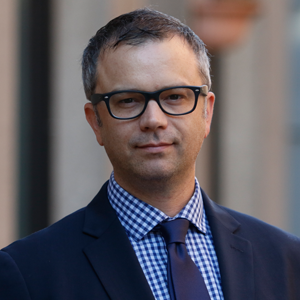
James Wright
Editorial Manager
Global Aquaculture Alliance
Portsmouth, NH, USA
Tagged With
Related Posts
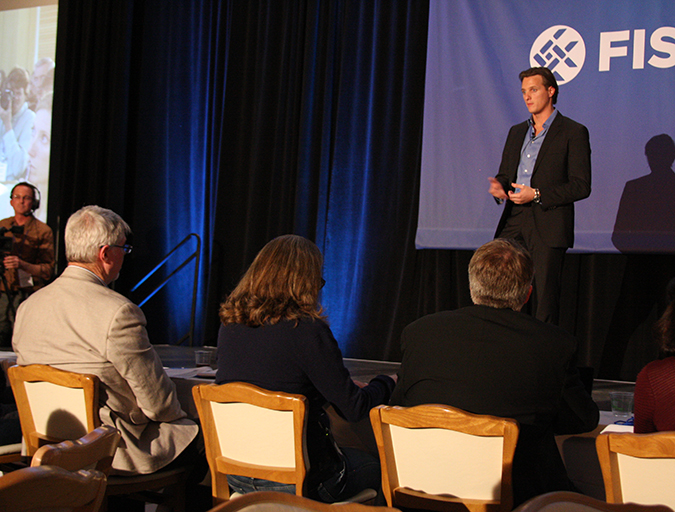
Innovation & Investment
Like fish in a barrel: Seafood innovators land investor interest
At Fish 2.0, it’s seafood, Silicon Valley style. Aquaculture companies gave their best pitches to investors and two left Palo Alto, Calif., as winners. Founder Monica Jain says the competition highlights a financial gap that must be bridged for the industry to advance.
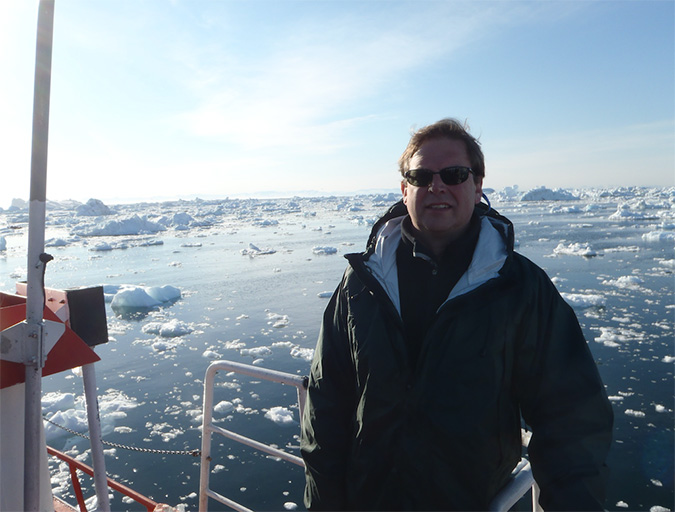
Innovation & Investment
Aquaculture Exchange: Sebastian Belle
The executive director of the Maine Aquaculture Association talks to the Advocate about the diverse and growing industry in his state (oysters, mussels, kelp, eels and salmon) and how aquaculture should be used as a rural development tool.
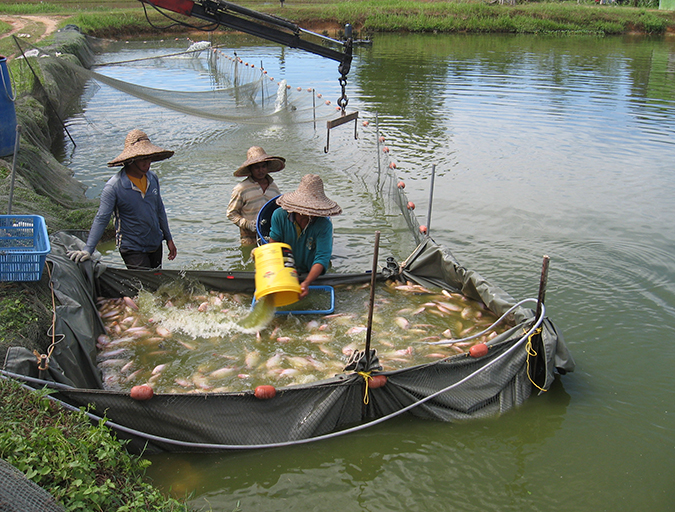
Intelligence
Fisheries and aquaculture: Sister activities with a common goal
Aquaculture and fisheries – although significantly different as one is farming and the other one is hunting – are very closely related activities that share many components of their value chains, including their markets and customers.
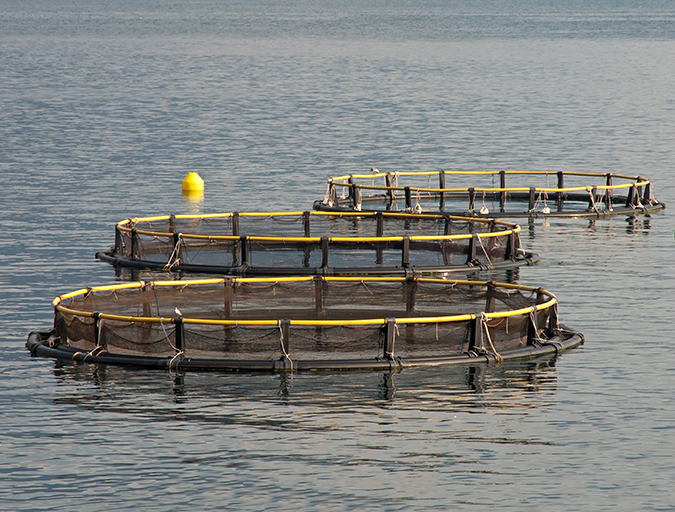
Intelligence
Rubino, Knapp lay out ‘political economics’ of U.S. aquaculture
Michael Rubino and Gunnar Knapp list key reasons why U.S. marine aquaculture has been limited to a scale far below its vast potential.


